Boondocking [boon-dok-ing]
Camping without hookups. Also known simply as dry camping.
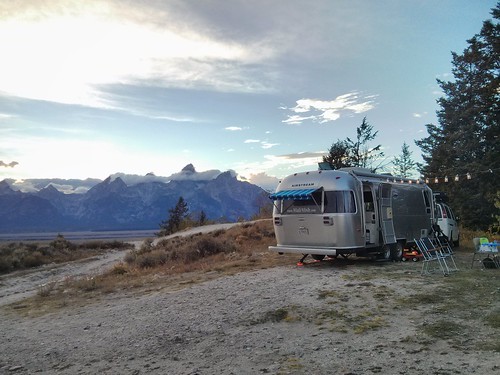
Boondocking in the Tetons.
Depending on whom you ask, there are many different definitions of the word “boondocking”. Some might argue that it has to do with the remoteness of the location while others will say that it is related to its cost, or lack thereof. Regardless what it means to you, one definition in common is that there are no hookups. This post is our attempt to show you what we do in order to boondock effectively and comfortably.
We have been asked a lot of questions over the years on tips and tricks to effectively boondock. A modern RV coming off of a manufacturer’s assembly line is not really designed to be used without utility connections for more than a day or two. The main limitation is its battery capacity. Most RV manufacturers design campers that are cost effective to build and profitable to sell. That means many of them will not come standard with high-end deep cycle batteries. Depending on the size, weight rating and space availability in the RV, holding tanks will also be limited. In our 25-ft Airstream trailer, we have two group-24, deep-cycle batteries, a 40-gallon fresh water tank, a 40-gallon grey water tank and a 40-gallon black water tank.
How to Find a Boondocking Site
We use many different resources in finding legal places to boondock. Many of them are publicly listed in these sites below while others are private locations that will require permission from the owner. Here are a few places to get you started in finding your next boondocking spot:
- freecampgrounds.com
- freecampsites.net
- Campendium (By our friends Aluminarium!)
- allstays.com
- blm.gov (Search federally-owned public land)
- overnightrvparking.com (membership required)
What you will need
Before you decide to head out to a boondocking spot, be aware of what your rig is capable of. If you spend most of your camping time connected at a campground, you are most likely not prepared to be without hookups for more than 2 days. The obvious considerations are these: Electricity, water, waste, heat and trash.
Electricity
If you use your camper as a glorified tent and don’t need much electricity, good for you and you can move on to the water section. If you’d like some modern amenities, you would need to know how long your batteries will last without hookups which basically comes down to two things: How fast you are putting amps back in to your batteries and how fast you are pulling them out. In standard lead-acid type batteries, your amp-hour rating will typically be cut by half when it comes to usable amps. For example, we have 2 group 24 batteries rated for 76 amp-hours each for a total of 152 amp-hours. That will only give us 76 usable amp-hours. Newer technology batteries, such as the lithium iron phosphate, are starting to appear on the market that will give you much better weight-to-power ratio but they are still very expensive. The more capacity and efficiency you have in your system, the longer you can go without recharging.
Lighting is one of the easiest upgrades you can make to extend your boondocking capabilities. If you have a camper made in the last couple of years, chances are you are already equipped with LED lights instead of incandescent or halogen lights. LED lights use only 1/8 of the electricity halogen lights do. That means for 1 minute you have a halogen light one, you can run an LED for more than 7 minutes. In our Airstream, most of our overhead lights use these disc-typed G4 light bulbs. Prices have plummeted on these and there is no reason to not replace your old lights. In our experience, we think the ‘Warm White’ versions of these bulbs resemble the origin halogen bulbs the most. We replaced most of ours back in 2012 and have been very happy with the color and durability. Here is the post I wrote about that experience.
Generator is probably the easiest option for someone who is new to boondocking. Assuming you have room to store a generator and fuel, there is no permanent installation necessary and most of your appliances in the camper will work as is. Depending on the size of your generator, you will be limited to what appliances you can run. A popular model is the Honda EU2000 Inverter generator. It has an output of 2000-watts which will run pretty much everything in an RV except for the air conditioner. That said, you will not want to run multiple high-power appliances at the same time such as a hair dryer and a toaster oven. To know exactly how much power each device is pulling, a simple watt meter like the Kill-A-Watt can be purchased to help you figure that out. If no high-power appliances are used, a 1000-watt, low-noise inverter generator such as a Honda EU1000 or a Yahama EF1000 would be an ideal setup as it excels with its small size, light weight, fuel efficiency and low noise. If you have a small AC unit and would like to run it from time to time, consider getting a larger unit like the Yamaha EF2400.
Your generator will also charge your batteries just as you would be at a campground with electrical hookups. The big downside of generators are that they are smelly, noisy, requires regular maintenance and needs refueling. Because you are using a converter/charger to top off your batteries, you are also not charging them in the most efficient way. Even though a generator is the easiest way to get your boondocking toes wet, it is probably not one you will enjoy using long term or make many friends who are out there looking for their peaceful bliss.
Solar Panels are probably the most ideal and reliable way of getting juiced up out in the boondocks. If money is not an issue, head over to your local RV store and ask them to set you up with the latest and greatest. That would consist of high efficiency solar panels mounted on the roof paired with a good MPPT (Maximum Point Power Tracking) charge controller. If you’re handy, you can also purchase the individual parts yourself and build your own solar system. When you are spec’ing out your setup, keep in mind that you will never get the full capabilities of your panels in all hours of day light. On a cloudless summer day, count on being able to get about 4-6 hours of full capacity. At a very minimum, I would suggest a 100-watt panel with a decent solar charge controller with a built-in voltmeter. That will let you know exactly the condition of your batteries at any given moment. In ideal conditions, it will replenish roughly 30-40 amp hours of electricity into your battery bank.
One of the options to consider in mounting solar panels is the ability to tilt. That will help dramatically in the early morning and afternoon hours. In the western hemisphere where the sun is low on the horizon during the winter time, tilting the panels and pointing them towards to sun can increase your charging capacity by as much as double when actively managed throughout the day. An alternative to consider is a portable solar system. Many companies sell panels that fold up and store away in a padded bag that simply attach to your batteries via alligator clips. They have built-in tilting legs and can be turned on the ground to aim at the location of the sun in the sky. A portable system can also be a life saver if you are camped in a shaded area by extending a long, heavy-gauged charging cable to a nearby field with clear view of the sky. Be aware that the thinner your wires are, the more voltage loss you will have which means less electricity going into your batteries. Keep the wires short and stout. That will give you the best possible charge.
A portable unit is an easy way to get into solar as they do not require any installation. They come complete with a built-in charge controller and are ready to deploy by simply clamping the leads directly to your batteries. As solar panel prices come down, it is now very affordable to purchase a complete portable system. Even if you eventually mount permanent panels on your camper, a portable unit will still come in handy as a supplemental charger on those cloudy winter days.
Although solar power is our preference for charging our batteries when we are boondocking, there are places where nothing else but a generator will suffice. Camping in heavily wooded and canopied forests or overcast skies for extended period of time is basically impossible if you solely rely on solar. Rather than having to hitch up and move to an RV Park with electrical hookups or a sunnier location, a generator will allow you to stay where you’d rather to be.
Water
Before you settle into a boondocking location, you will want to top off your fresh water tank and empty your waste tanks. Unlike being hooked up to water and sewer at a campground, you will need to consciously monitor your usage to make it last. With our 40-gallon fresh tank, we have found that we can last about 3 days with our family of 5. That is using our resources very conservatively with most meals made in the camper. We use roughly 3-gallons of water per person, per day. As compared to a standard household, each person can use as much as 100 gallons in one day. A typical household shower has a flow rate of 4 gallons per minute. That means a 10 minute shower alone will use 40 gallons of water.
Showering is one of the big uses of your water storage. A method referred to as ‘Navy Shower‘ is typically used to conserve water. It means you only run the water when you need to. Roughly 2 gallons of water are consumed during one of our navy showers which really helps in extending our use.
Dishwashing is another big time water expense. People often like to leave the water running while washing dishes. That habit will quickly drain your water tank so we use a similar technique as showering when we wash dishes. We only turn on the faucet when we are wetting and rinsing the dishes. Essentially, we are giving our dishes a ‘navy shower’. You can also catch the water in a large bowl placed in the sink and use that to flush your toilet to increase your efficiency.
Refilling water is often necessary if you are staying more than a couple of days at a boondocking location. Our favorite water container is the Reliance BPA-Free Rhino Pack that holds 5.5 gallons of water. They are rugged and durable while easy to fill at most water refill stations. A conveniently large venting port also allows transferring water into your fresh water tank a breeze. Many gas stations will have spigots that you can fill water at as long as you ask for permission. Often they will require you to buy something there first. Many businesses will also have filtered water in automatic vending machines that you can use to fill your tanks with. I have found that carrying between 2-4 of these water containers will limit your trips to the water fill station to just a couple of times a week during an extended stay. Of course you can also simply hitch up and drive to a nearby campground to fill your water tank directly. That also gives you an opportunity to dump your waste tanks while you are there.
Waste Tanks
Grey Water – Before you get to your boondocking spot, you should ask the proper authorities whether or not it is okay to dump your grey water directly on the ground. Many BLM locations allow grey water dumping but getting permission first will always keep you out of trouble. Black tanks on the other hand is a big No-No to dump anywhere except a proper dump station.
Black Water – Our black water tank will last about a week and a half which is a decent amount of time for us to be at any one campsite. Nearby campgrounds will usually let you dump and fill your tanks for a fee as do many truck stops that have RV facilities. Before heading out, do some research on the surrounding campgrounds, gas stations and truck stops to see what your dumping options are.
Heating
In colder climates, heating can be a major battery drain in the evening when temperature drops. Even though forced-air furnaces used in RVs run on propane, the electrical components that keep them blowing can kill your batteries in a single night. Unless your electricity production is at a surplus each day, you will inevitably run into electricity deficits and be forced to leave your campsite prematurely. A couple of ways to make sure your furnace is not ruining your trip is to make sure your camper is well insulated. In our Airstream, we have a lot of windows which are great to let in light and give us great views during the day. In the evening, they are draining our heat right out through the glass as they provide no insulating qualities. The simplest way to remedy this is by cutting up custom-shaped Reflectix panels to cover all of the windows after dark. Reflectix is made of the same material as your car’s windshield shade which are lightweight, thin and roll up for easy storage during the day or warmer nights. Not only do they keep the heat from escaping, they are also great in blocking sunlight from coming in if you want to sleep in or keeping the camper cool in the summer.
To further assist with heating the interior at night without draining your batteries, propane-powered catalytic heaters like the Mr. Heater’s Portable Buddy can also be used. It takes the disposable 1-lb propane bottles or an adapter can be used to run larger, refillable tanks. Be very careful when using these heaters indoors. Even though catalytic heaters are suppose to be 100% efficient, you will need to crack a couple of windows to make sure you have enough oxygen and provide proper air flow. Also make sure to regularly test your propane detector so you can be instantly alerted if there is a leak.
Trash
Trash can quickly pile up so taking it out daily is our boondocking routine. It also limits the volume of our trash per trip so many of them can be discarded at businesses we patronize. Obviously you will again want to ask for permissions but most of them will not have a problem with it assuming you are making a purchase of some kind. If you are allowed to have campfires at the site, you can also opt to burn paper-based trash as a method of starting your campfires in the evening.
Etiquette
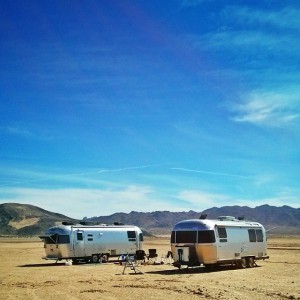
Boondocking with friends at Joshua Tree Dry Lake
Most people go boondocking in order to find a place for some peace and solitude. Unless the site is really crowded and you have no other options, give your neighbors as much space as you can afford. If you plan to use a generator, be considerate as to the amount of noise you are generating. Try to position your generator so the sound and smell of exhaust is at a minimum for all of your neighbors. Even though there might not be any official ‘quiet hours’, use common sense to not disturb others with any noise you are generating.
It goes without saying that you should leave the site as good as, if not better, than how you found it. Most boondocking campsites are located in areas that are well used by other campers. Do your best to camp only in spots that have been used instead of blazing your own trail. There are plenty of remote places to camp already so there is no need to disrupt nature even more to find a spot to call your own.
Conclusion
I hope this provided you with some ideas as to how you might make your next boondocking trip more successful. This is by no means a complete how-to guide on boondocking and I will do my best to update it as our methods improve. I would suggest that if you have never done any boondocking, just go out there and try it for a night or two. You will not need to make any modifications to your camper for a short trip. It will let you know if this type of camping is for you. It will also let you know just exactly how you will need to modify your camping habits to make boondocking work for you before investing money in new gear. Ask a friend to come caravan along. More people is always more fun when you are boondocking! You can also provide each other with ideas on how to make your future experiences even better. Feel free to provide us with any feedback and ask us any questions you may still have via the contact page. Happy travels!
Dan
P.S. You can help us by purchasing useful products to make you a better boondocker by using these Amazon links below:
- 12-Volt Group 24 AGM Battery
- 12-volt Warm White Replacement LED Light Bulbs
- Kill-A-Watt Meter
- Yamaha EF1000
- Yamaha EF2400
- 100-watt Solar Panel
- Solar Charge Controller
- Portable Folding Solar System
- Reliance Rhino Pak Water Container
- Reflectix Insulation Panels
- Mr. Heater Propane Catalytic Heater
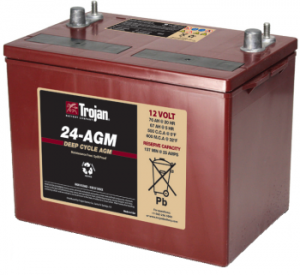
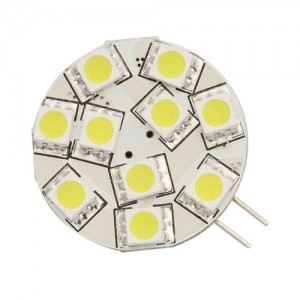
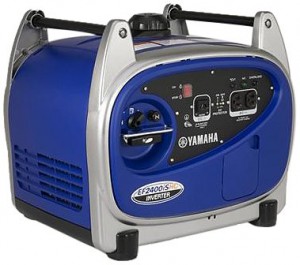
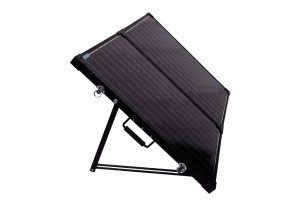


0 Comments